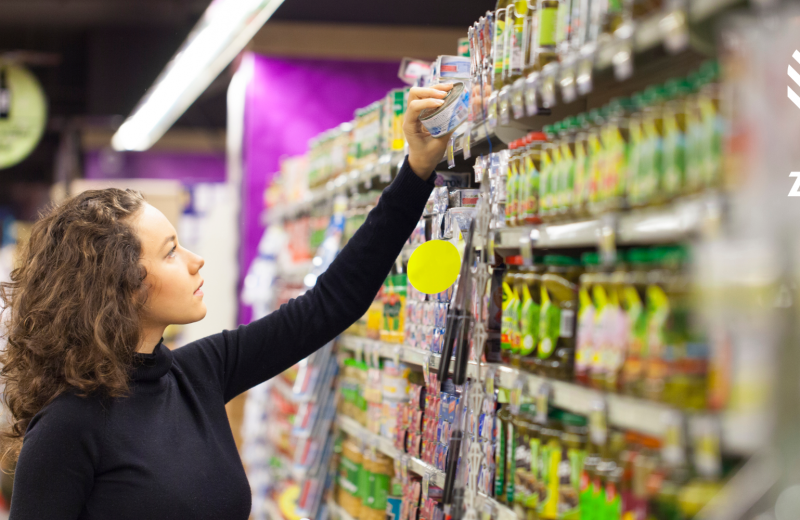It’s not easy to provide stellar customer service with very little customer contact, but it is absolutely possible
Retailers and grocers have been preparing for an increase in online shopping over the past few years by expanding their “buy online, pick up in store” (BOPIS) service and introducing drive-up options that make it easy for customers to grab and go.
While it was presumed by many industry leaders and analysts that click-and-collect adoption would steadily increase in popularity, COVID-19 arrived and spiked demand beyond levels that anyone could have predicted for 2020.
Millions of customers have switched to using click-and-click collect services to do some or all of their shopping, and these newly-adopted habits are expected to stick around after the threat of Coronavirus clears.
The problem is, can retailers keep up with this heightened demand? In many instances, people fill their carts only to realise that the earliest available collection date is too far away. Even retailers with the most mature click-and-collect service models have found it difficult to keep up.
So how do retailers offer both a contactless and frictionless shopping experience for click-and-collect customers?
For many retailers ramping up click-and-collect services, the immediate goal is to shorten order lead times for customers and increase their store’s capacity to fulfill online orders overall. At the same time, retailers must also minimise the number of out-of-stocks and substitutions for their online-only shoppers.
As a result, many retailers are at this very moment rethinking their store formats, trying to figure out how they can help employees pick online orders more efficiently and help shoppers pick up items easier. There are four key areas retailers should focus on to achieve a flawless click-and-collect service:
- Communications between staff and customer
The key to any good relationship is communication.
Store employees must be able to contact one another easily, and have visibility over all stock in the store, whether it is on the shelf, in the storeroom or the loading dock. One way to achieve this is by giving staff handheld mobile computers, which allow workers to instantly contact a co-worker with voice, push-to-talk services and text messaging.
By connecting floor staff with stockroom staff, retailers can give customers a more accurate picture of stock levels, avoid unnecessary out of stocks due to items not being replenished on the shelf and retrieve click-and-collect orders more efficiently.
Communication with customers throughout the order process is also key. From making an order all the way through to possible returns and refunds, it’s imperative to provide regular alerts and reminders, either by text or email as the customer chooses.
- Staging
With the drastic increase in click-and-collect orders, staging has become an issue for many retailers. In many cases, there simply isn’t enough room to hold all the orders at once, which becomes even more difficult in the case of cold-chain products. The increase in orders has placed more pressure on store employees to pick orders in a reduced timeframe, which can lead to mistakes and incorrect items being delivered to the customer.
One way to reduce the strain on pickers, and subsequently the amount of preventable errors, is to set up collection lockers outside the store. Customers can drive up, unlock their assigned locker, collect their groceries and drive off without any interaction with employees. Secure lockers are a perfect way to maintain social distancing and save time, while increasing convenience for the shopper. Though this may not be the right solution for all grocers, it is certainly one to consider in the current climate.
- Locationing and handover
A customer’s order should be ready when they arrive. With all the digital aids now available to help retailers, there really isn’t an excuse for customers to be waiting in the queue for a store employee to retrieve their package. There are several different ways that retailers can achieve seamless collection.
Digital kiosks have long been a favoured and cost-effective way for customers to notify back-room staff of which packages to retrieve, without having to wait in the regular queue. However, the desire to minimise direct contact with surfaces might leave customers hesitant to use these devices right now. Alternatively, retailers could employ QR codes that customers can scan at the kiosk – or that a carpark attendant could scan from a distance at the vehicle using a mobile computer or tablet.
With larger products, or in the case of drive-through collection, the “hand off” process should ideally be restricted to the customer popping their vehicle’s trunk and the store associate placing the items directly inside. As long as customers are attended to quickly and safely, there isn’t necessarily a wrong or right way to do it – but all retailers should be focusing on this area.
- Payments
Prior to COVID-19, there was a high rate of “payment on collection” transactions for click-and-collect orders. In today’s “contactless” world, retailers should consider switching to a “payment before collection” model, meaning the customer just has to come and collect their parcel instead of waiting to be served. If payments must still be made in person at the time of pickup – it is highly recommended that mobile point of sale (mPOS) solutions be utilised to reduce. These devices can be used both in the store and at drive-through collection points.
With retail margins ever tighter, Click & Collect can allow bricks-and-mortar retailers to win back competitive advantage over ‘pure play’ online providers – but the process has to be efficient and profitable.
Discover how you can improve your in-store operations and click and collect service in Zebra’s 2020 Shopper Vision Study.


